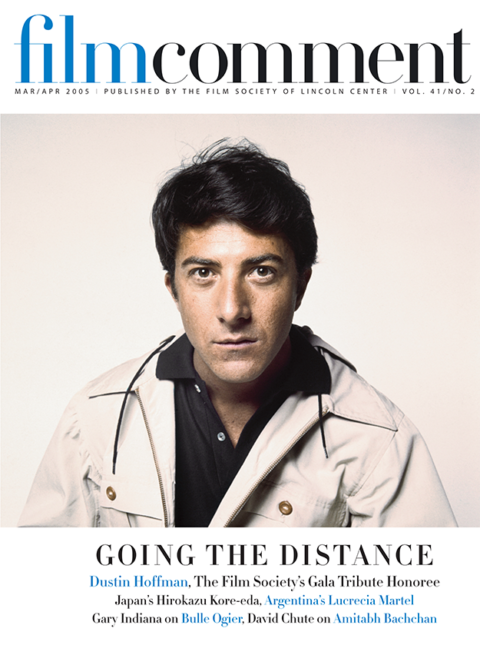
Under what conditions was the video shot? Was it arranged for the piece or found on site? Was it lit in any particular way?
We collaborated with a scientist specializing in wasp behavior, a guy named Bob Matthews at the University of Georgia in Athens. Working early in the spring at his lakeside summer house, we located a number of queen wasps just starting to build nests in the eaves around the house. Meanwhile, we set up a simple wooden box structure in a basement window and then transferred several of the naturally occurring nests from where they were into the semi-controlled box environment. This is a technique Bob had experimented with before as part of his insect research.
The box was necessary to provide some control over lighting and recording conditions, as well as to reduce the risk of predators destroying the nest. One end of the box faced the basement interior with the camera sitting behind Plexiglas focused on the developing nest. The other end of the box remained open to the elements so that the wasps had full access to their natural sources of food and nest building materials. Artificial lighting was kept on the nest 24hrs/day mimicking a porch light under the eaves of an average house where a nest might actually develop. Once everything was set up, the camera was allowed to run continuously for the duration of the life cycle of the nest.
How was the recording done and monitored? Is it “edited” in any way?
The full three months were recorded directly onto an Apple X Serve hard drive. The camera shot and sent the image in real time to an mpeg compressor that churned out 24hrs Quicktime video files. There is no editing: the image records continuously except for a few seconds every 24 hrs as one mpeg file finishes and the next one begins. There is no tape. It is digital image data stored on a computer hard drive, just 1s and 0s, something like 2 terabytes of it. So aside from the beginning and end points of the recording (these decisions were dictated by the natural life cycle of the particular nest), and the blips in the recording every 24hrs (dictated by the limitations of the technology), the recording runs continuously, unedited.
Is there anything you can tell me about the hardware aspect: how the drive works in accord with the G5, projector, etc. And in what ways do you conceive of the computer-projector cart as a component of the piece or compliment to the image?
The rack and all components are integral to the recording and playback of the video. The whole setup is designed to be portable, problem-free, and easy to use as possible. Visually, the rack emphasizes portability. Like a DJ’s setup, you literally unplug it, snap on the doors, and its ready to ship.
Any thoughts on the relationship to Warhol’s Empire? I assume there is a conscious dialogue.
For me, Warhol’s films are dispassionate studies of human behavior, revealing the laws of desire behind human emotion and action; they unmask the relationships between cause and effect that make people akin to machines and animals. My digital video Empire is done in a similar spirit. In the same way that Warhol’s image of the Empire State building gives the viewer a striking object through which to contemplate things that are really immaterial, like human aspiration, ambition, or the passage of time, so the wasp nest provides a visual hook to draw the viewer into contemplation of insect behavior, an invitation to project an anthropomorphic narrative onto the nest-building activity of wasps. In a way the nest is a ruse for a study of the perceptual behavior of the viewer.
I like the idea of a non-narrative use of video, one that focuses instead on the nature of the medium itself. I’m trying to capitalize on the power of video to simulate reality, while consciously working against the grain of narrative conventions which coddle the viewer’s desire for easy-to-digest stories with pat resolutions and predictable patterns of beginning, middle and end. I’m working against the tendency of the viewer to get lost in his or her own emotional involvement in the moving image. What disappears in traditional narrative is a consciousness of the material manipulation that’s taking place. Changing temporal scale-making an endlessly repeating three second loop or a still shot that lasts three months-disturbs this relationship and calls the viewers attention back to the animal-like or machine-like apparatus of perception.








